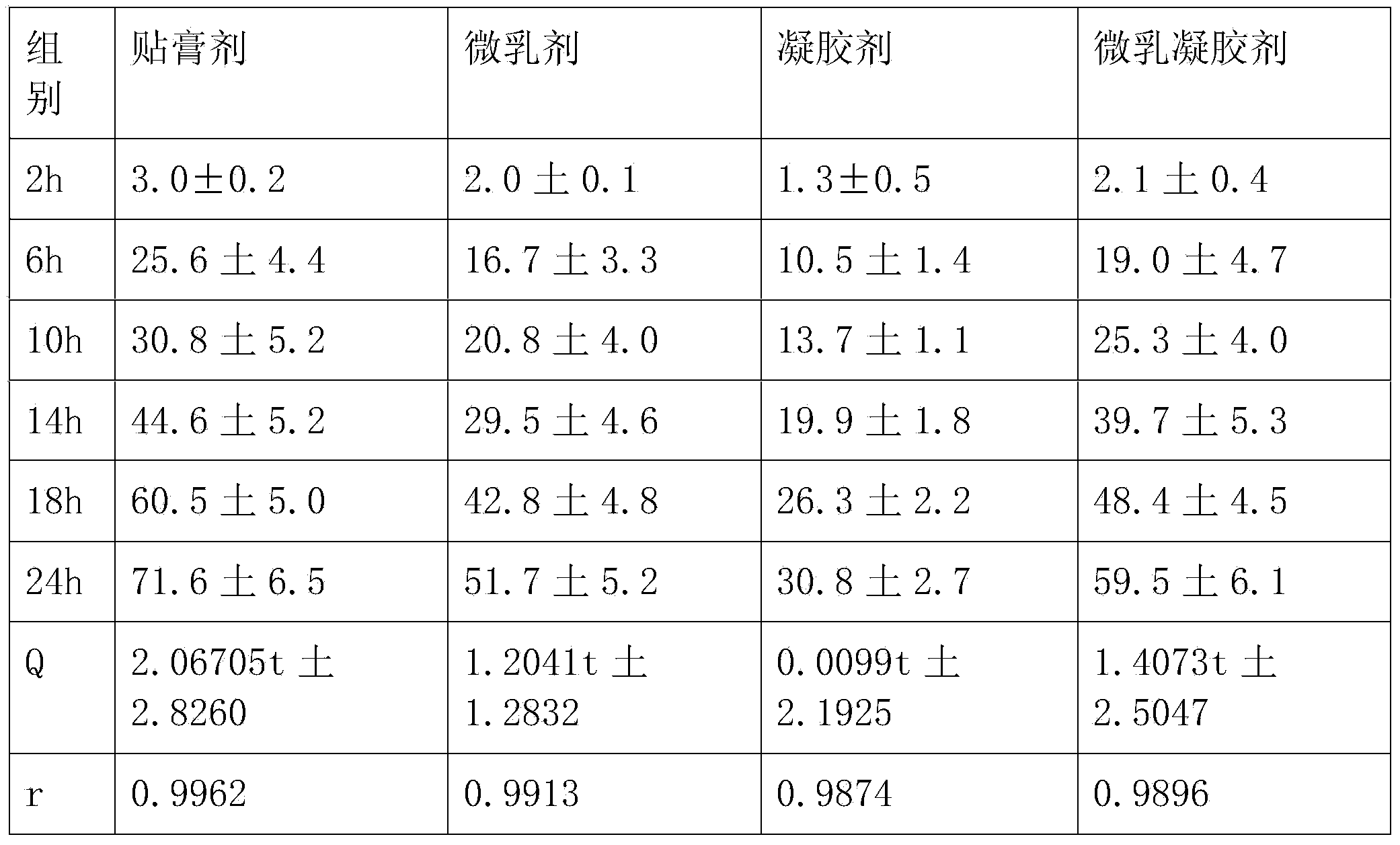Bazedoxifene acetate emplastrum
A technology of bazedoxifene acetate and plaster, which is applied in the directions of bone diseases, antitumor drugs, sheet delivery, etc., can solve the problem that the dosage of microemulsion preparation is difficult to control, the transdermal effect cannot meet the requirements, and it is easy to wipe off. Drugs and other problems, to avoid the peak and valley phenomenon of blood drug concentration, facilitate production automation and aseptic operation, and avoid the effect of first-pass effect
- Summary
- Abstract
- Description
- Claims
- Application Information
AI Technical Summary
Problems solved by technology
Method used
Image
Examples
Embodiment 1
[0034] Bazedoxifene Acetate 20g
[0035] Propylene glycol 300g
[0036] Polysorbate 150g
[0037] Oleic acid 30g
[0038] Add pure or distilled water to 1000g
[0039] Using this prescription, the bazedoxifene acetate microemulsion was prepared for subsequent use. Heat the acceptable excipients to 140-160°C to melt, lower the temperature to 90-100°C, add the adhesion enhancer and spare bazedoxifene acetate microemulsion, mix well, and then pour the mixture while hot On the release film [release paper], cover with another layer of release film, pressurize both sides to form a film. After the above film is cooled to room temperature, the upper layer of peeling film is peeled off, and the non-woven fabric is covered on the adhesive layer and pressurized to make 1000 pieces.
Embodiment 2
[0041] Bazedoxifene Acetate 20g
[0042] Propylene glycol 300g
[0043] Polysorbate 300g
[0044] Oleic acid 50g
[0045] Carbomer 94050g
[0046] Add pure or distilled water to 1000g
[0047] Using this prescription, the bazedoxifene acetate microemulsion was prepared for subsequent use. Heat the acceptable excipients to 140-160°C to melt, lower the temperature to 90-100°C, add the adhesion enhancer and spare bazedoxifene acetate microemulsion, mix well, and then pour the mixture while hot On the release film [release paper], cover with another layer of release film, pressurize both sides to form a film. After the above film is cooled to room temperature, the upper layer of peeling film is peeled off, and the non-woven fabric is covered on the adhesive layer and pressurized to make 1000 pieces.
Embodiment 3
[0049] Bazedoxifene Acetate 20g
[0050] Propylene glycol 300g
[0051] Polysorbate 200g
[0052] Oleic acid 30g
[0053] Polyvinyl alcohol 100g
[0054] Add pure or distilled water to 1000g
[0055] Using this prescription, the bazedoxifene acetate microemulsion was prepared for subsequent use. Heat the acceptable excipients to 140-160°C to melt, lower the temperature to 90-100°C, add the adhesion enhancer and spare bazedoxifene acetate microemulsion, mix well, and then pour the mixture while hot On the release film [release paper], cover with another layer of release film, pressurize both sides to form a film. After the above film is cooled to room temperature, the upper layer of peeling film is peeled off, and the non-woven fabric is covered on the adhesive layer and pressurized to make 1000 pieces.
PUM
 Login to View More
Login to View More Abstract
Description
Claims
Application Information
 Login to View More
Login to View More - R&D
- Intellectual Property
- Life Sciences
- Materials
- Tech Scout
- Unparalleled Data Quality
- Higher Quality Content
- 60% Fewer Hallucinations
Browse by: Latest US Patents, China's latest patents, Technical Efficacy Thesaurus, Application Domain, Technology Topic, Popular Technical Reports.
© 2025 PatSnap. All rights reserved.Legal|Privacy policy|Modern Slavery Act Transparency Statement|Sitemap|About US| Contact US: help@patsnap.com

